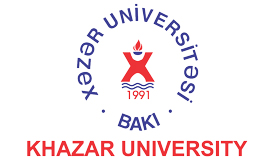International Conference on Materials Science and Research
November 16-18, 2017 Dubai, UAE
Structural and Electronic Properties of CaFX (X= Cl, Br and I) Compounds in its Matlockite-Type Structure via First-Orinciples Calculations
1Institut des Sciences, Centre University dʼAin Temouchent, Algeria
2Laboratory dʼEtude des Matériaux et Instrumentations Optiques, Faculté des Sciences Exactes, University de Sidi Bel-Abbes, Algeria
We present the results of the ab initio theoretical study of the structural, electronic, optical and thermal properties for CaFX (X=Cl, Br and I) compounds in its matlockite-type structure used the full-potential linearized augmented plane-wave (FP-LAPW) [1] method as implemented in WIEN2K code [1]. We used the generalized gradient approximation (GGA) [1] based on exchange∇correlation energy optimization to calculate the total energy. Moreover, the modified Becke-Johnson potential (TB-mBJ) [1] was also applied to improve the electronic band structure calculations. Ground state properties such as the lattice parameters, c/a ratio, bulk modulus, pressure derivative of the bulk modulus and cohesive energy are calculated as well as the optimized internal parameters, by relaxing the atomic position in the force directions. The variations of the calculated inter atomic distances and angles between different atomic bonds are discussed. The electronic band structure, density of states and charge density calculations show that these compounds are ionic insulators.

Keywords: FP-LAPW method; matlockite-type structure; Structural and electronic properties.
References
[1] G.K.H. Madsen, P. Blaha, K. Schwarz, E. Sjöstedt, L. Nordström, Phys. Rev. B 64, 195134 (2001)
[2] P. Blaha, K. Schwarz, G.K.H. Madsen, D. Kvasnicka, J. Luitz, Wien2k,AnAgmented Plane Wave Plus Local Orbitals Program for Calculating Crystal Properties, Vienna University of Technology, Austria (2001)
[3] J.P. Perdew, K. Burke, M. Ernzerhof, Phys. Rev. Lett. 77 (1996).



